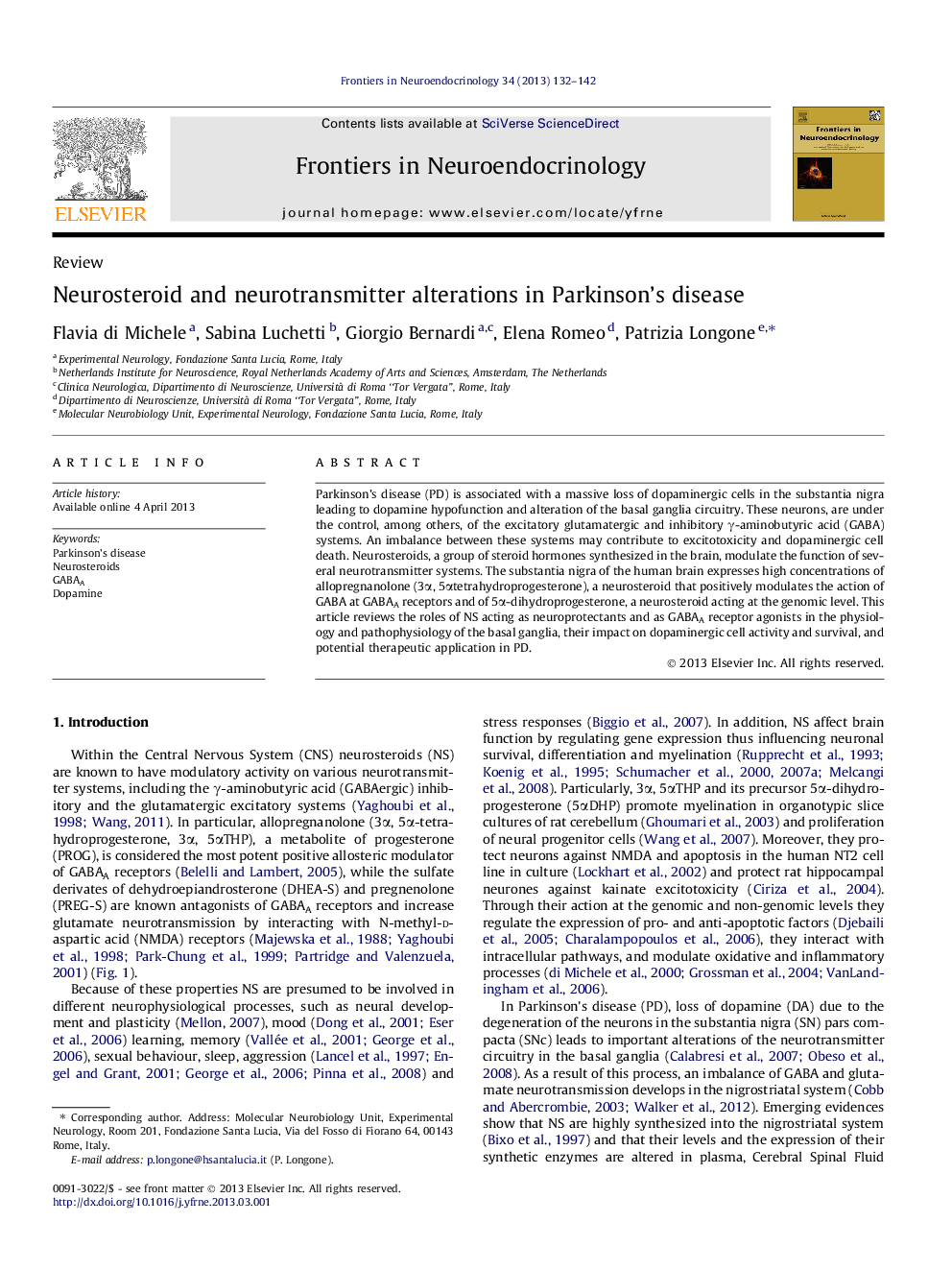| کد مقاله | کد نشریه | سال انتشار | مقاله انگلیسی | نسخه تمام متن |
|---|---|---|---|---|
| 2799348 | 1155971 | 2013 | 11 صفحه PDF | دانلود رایگان |

• Neurotransmitter imbalance contributes to dopaminergic cell degeneration in PD.
• GABAergic neurosteroids are highly expressed in the substantia nigra.
• Their pathway alteration could contribute to Parkinson’s disease development.
Parkinson’s disease (PD) is associated with a massive loss of dopaminergic cells in the substantia nigra leading to dopamine hypofunction and alteration of the basal ganglia circuitry. These neurons, are under the control, among others, of the excitatory glutamatergic and inhibitory γ-aminobutyric acid (GABA) systems. An imbalance between these systems may contribute to excitotoxicity and dopaminergic cell death. Neurosteroids, a group of steroid hormones synthesized in the brain, modulate the function of several neurotransmitter systems. The substantia nigra of the human brain expresses high concentrations of allopregnanolone (3α, 5αtetrahydroprogesterone), a neurosteroid that positively modulates the action of GABA at GABAA receptors and of 5α-dihydroprogesterone, a neurosteroid acting at the genomic level. This article reviews the roles of NS acting as neuroprotectants and as GABAA receptor agonists in the physiology and pathophysiology of the basal ganglia, their impact on dopaminergic cell activity and survival, and potential therapeutic application in PD.
Journal: Frontiers in Neuroendocrinology - Volume 34, Issue 2, April 2013, Pages 132–142